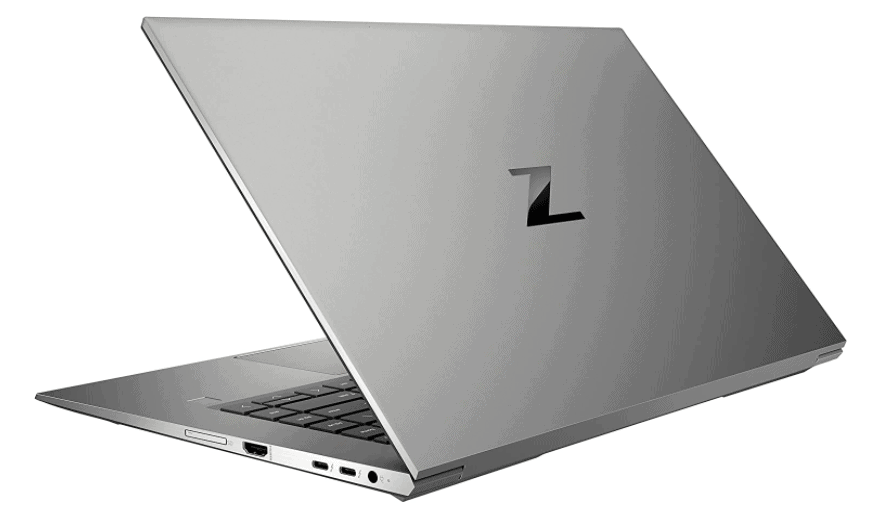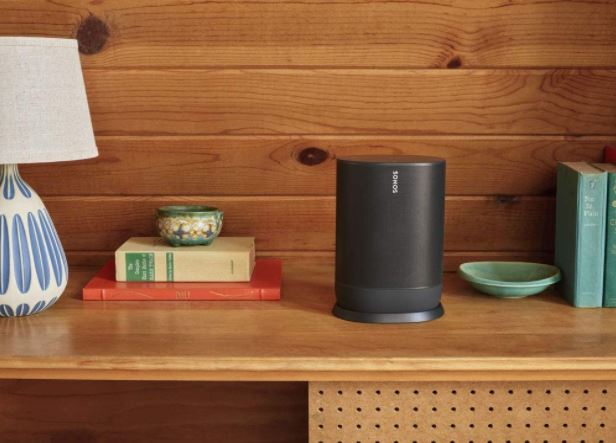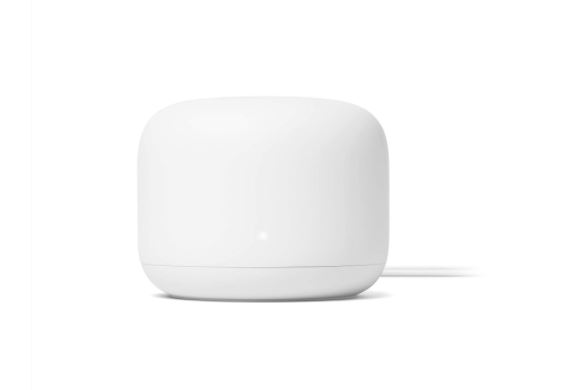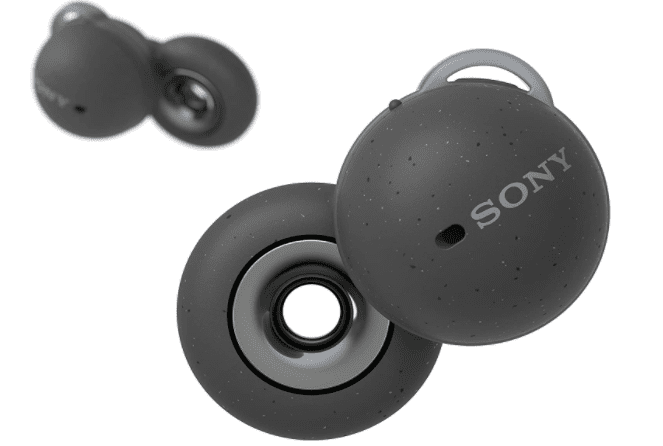Garmin’s new-for-2022 Vivomove Sport is a real hybrid smartwatch, with physical hands that move around the dial and a screen that remains completely hidden until needed. It’s the polar opposite of its main competitor, the Fitbit Versa 3, and will appeal to anyone who dislikes the Fitbit‘s uninspiring look.
The good news is that, as I discovered, the design isn’t the only thing I appreciate about the Garmin Vivomove Sport.
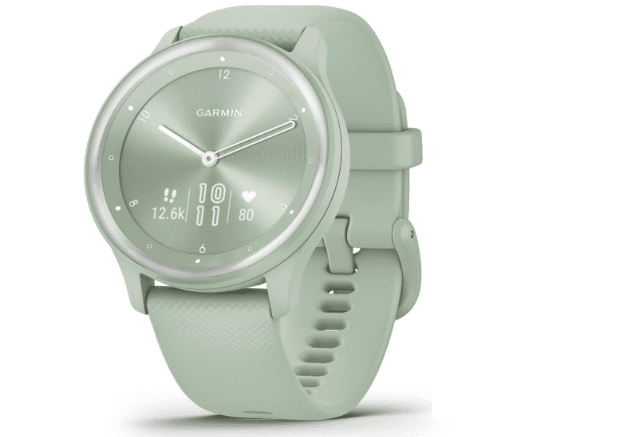
Garmin Vivomove Sport Design
Because the little OLED screen is fully hidden until needed, the Garmin Vivomove Sport is particularly adept at concealing its hybrid smartwatch status. I dare you to look at the photos with the screen off and tell me there’s no one there at all.
I really like this idea, especially as more hybrid smartwatches increasingly combine always-on E-Ink screens, where the design edges away from “watch” and far closer to “smartwatch.”
Not so here, and it looks fantastic. The deal is straightforward, with Garmin branding, six-hour markers, and some extraneous chronograph-style marks on the bezel.
The surface features a faint vinyl record-style polish that is scarcely visible unless you look closely, and the baton hands are silver. There is no secondhand, no case buttons, and no crown.
The case is composed of fiber-reinforced polymer (a material utilized by Garmin for previous models such as the Fenix line) and has glass over the dial with a very tiny curvature at the edges. It’s smooth and warm to the touch, yet it’s prone to becoming greasy.
It’s tied to a basic rubber strap in black on my review sample, but the Vivomove Sport is also available in Ivory, Cocoa, and Cool Mint. The Vivomove Sport weighs only 34 grams and is quite comfortable to wear. I’ve been wearing it 24 hours a day for five days with no irritation or problems overnight, or even the need to change the strap since it got too hot or humid.
The design is appealing to me. The simplicity of the design means it fits with everything, especially in black, and the 40mm case size is modest and ideal for most wrists.
Wearing the Vivomove Sport will not make a statement, but due to the hidden screen, you will not promote that you are wearing a smartwatch either. It appears to be a typical stylish watch.
It’s exactly what a decent hybrid smartwatch should be, and it’s excellent for anyone who dislikes the inherent sportiness of a fitness band or the geekiness of a full touchscreen but recognizes the necessity for a screen to boost usefulness but doesn’t want to look at it all the time.
You can also read: Fitbit Versa 2 Health and Fitness Smartwatch
Software and app
I tested the watch ahead of its debut using the Garmin Connect software on a Samsung Galaxy Z Fold 3, and it’s also iOS compatible. I’ve had no issues with the connection, and the synchronization has been flawless. It does lack a few capabilities, such as Google Assistant or Siri integration, that comparable models, such as the Fitbit Versa 3, have.
Notifications are consistently sent; however, the screen is small, so don’t expect much more than basic, glanceable information. More information will be displayed if you tap the incoming notification, but this is of little use because one message spans multiple screens.
The notifications function exactly as you would expect from a hybrid smartwatch: as a prompt to decide whether or not to grab your phone.
The vibration alarm isn’t very strong by default, but if you go into the Settings menu, you may raise the length of time it buzzes; however, battery life will suffer. It’s not the only way to customize the watch; inside the app, you can modify everything from the watch face to the workout options displayed, as well as gesture control options and hand alignment.
The Garmin Connect app is visually appealing and simple to use. It is heavily packed with information and facts, but I found it to be often densely presented and difficult to find. A slide-in menu adds extra options, but navigating through it all may be difficult and time-consuming.
It’s clearly for data addicts, and I rarely found anything that gave me advice on what to do with the data or how to enhance it. Instead, Garmin encourages you to participate in pre-generated community challenges or ones you develop with friends.
The Vivomove Sport isn’t as pricey as a Garmin sports smartwatch, but it’s still comprehensive enough for both casual exercisers and serious athletes to use with Connect.
There are features such as the ability to add details to your shoes and bike, save courses you regularly run and then navigate them using Garmin’s PacePro pacing system, and create custom workouts for the watch to track. All of your stats, from sleep to stress and heart rate, are viewable on individual screens with up to a year of historical data.
It can be as complex as you want it to be, and if you just want to track a couple of workouts a week, it’s just as happy to do that as anything more strenuous.
You can also read: The best fitness trackers to Buy in 2022
Garmin Vivomove Sport Battery
The Garmin Vivomove Sport’s battery lasted five days when connected to an Android smartphone and showed notifications, including all-day heart rate monitoring, a couple of exercises logged, and sleep tracking overnight. The battery is charged using a proprietary connector included in the box.
I didn’t enable blood oxygen monitoring for sleep, which would have further reduced the use time, but with these settings, it’s in accordance with Garmin’s battery life expectations.
It’s longer than a full smartwatch like the Apple Watch but shorter than particularly power-efficient smartwatches like the Huawei Watch GT 3. Five days is sufficient, although, given the small screen on the Vivomove Sport, I would have preferred it to be longer.
Screen and menu
Garmin’s decision to hide the screen works in terms of design, but what about when it’s turned on? When you lift your wrist or double-touch the glass, it will display the clock, battery status, and date.
You may also operate the menu system by tapping the glass, allowing Garmin to avoid using buttons on the case, and it’s an accurate and dependable mechanism.
Swipe on the screen to see steps, heart rate, health info, and more. When you see these screens, the hands automatically rotate out of the way.
Long-press the screen to bring up the fitness menu, where you can easily launch a walk, run, cycle, weight training, yoga, meditation, or swimming session. If you dig further, you’ll find more in-depth health features like VO2 Max, blood oxygen, and fitness age, as well as certain watch settings.
Because of the accuracy of the touch-sensitive glass on the watch, on-screen selections may appear small, but they are very easy to detect and tap with your finger.
Unfortunately, while the OLED screen is dazzling, its resolution is only 72 x 154 pixels. The information provided has a perceptible blur, almost as if it’s out of focus or the glass is dirty, and it looks out of place next to the physical hands and markings on the dial. It has no effect on functionality or legibility, yet it is distracting and looks cheap.
You can also read: Samsung Galaxy Fit 2 Review
Garmin Vivomove Sport Health tracking
I tracked workouts with both the Vivomove Sport and the Apple Watch Series 7, and the Garmin produced far greater results than the Apple Watch.
The Vivomove Sport increased the average heart rate by about 10 beats per minute, which presumably influenced calorie burn, which was usually 50 or 60 kcal higher as well. When the Garmin sleep monitoring was compared to the Oura Ring, neither agreed on sleep stage timing but were nearly comparable for heart and breathing rate.
Because none of these are medical devices, outcomes will always vary, but in my experience, the Apple Watch usually matches most other wearables in terms of activity tracking and heart rate.
I’m testing the Garmin Vivomove Sport before its official release and using a modified version of the Garmin Connect software, so changes to the watch’s firmware and algorithms may occur after release.
What else is there? Menstrual cycle and pregnancy tracking are available, as are the ability to report liquid intake, GPS tracking via your phone manually, several safety measures such as location sharing in an emergency, and some mindfulness-style relaxation capabilities.
Garmin’s Body Battery is an odd innovation that could be useful but is poorly implemented. It measures your energy level to help you decide if now is a good time to work out or otherwise exert yourself. I haven’t found it useful daily, primarily since you have to search for your battery level in the app.
The Oura Ring has a similar readiness score, but it appears on the app’s home screen first thing in the morning, making it more useful for day planning.
The touch-sensitive glass and quick, straightforward way of enabling workout tracking are excellent features, as the process may be a tiresome mix of button clicks on hybrid smartwatches.
Not so here, as you can get real data on heart rate and calorie burn by swiping the little screen. The Vivomove Sport meets my basic health tracking needs admirably, with plenty of room for the more avid exerciser as well, although the accuracy might use a few changes.
CamRojud may earn a certain commission on products purchased via our links, which supports our effort on this content.
Would you like to read more about Garmin Vivomove Sport-related articles? If so, we invite you to take a look at our other tech topics before you leave!







